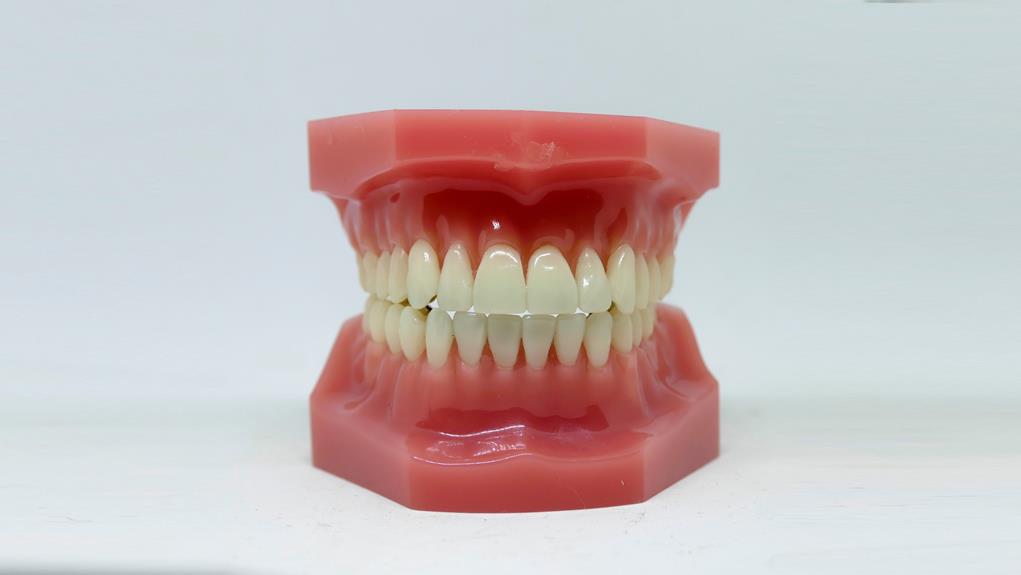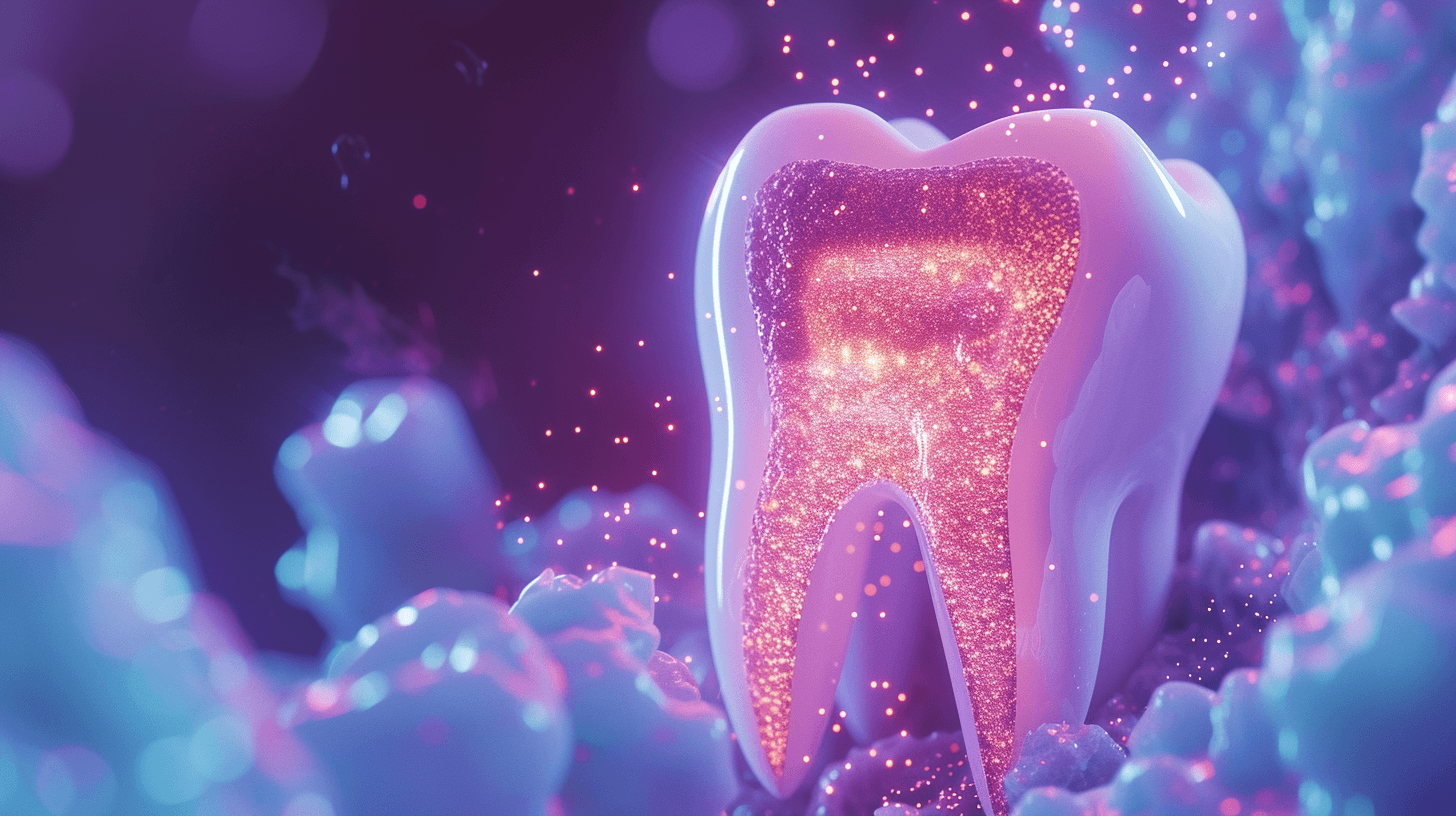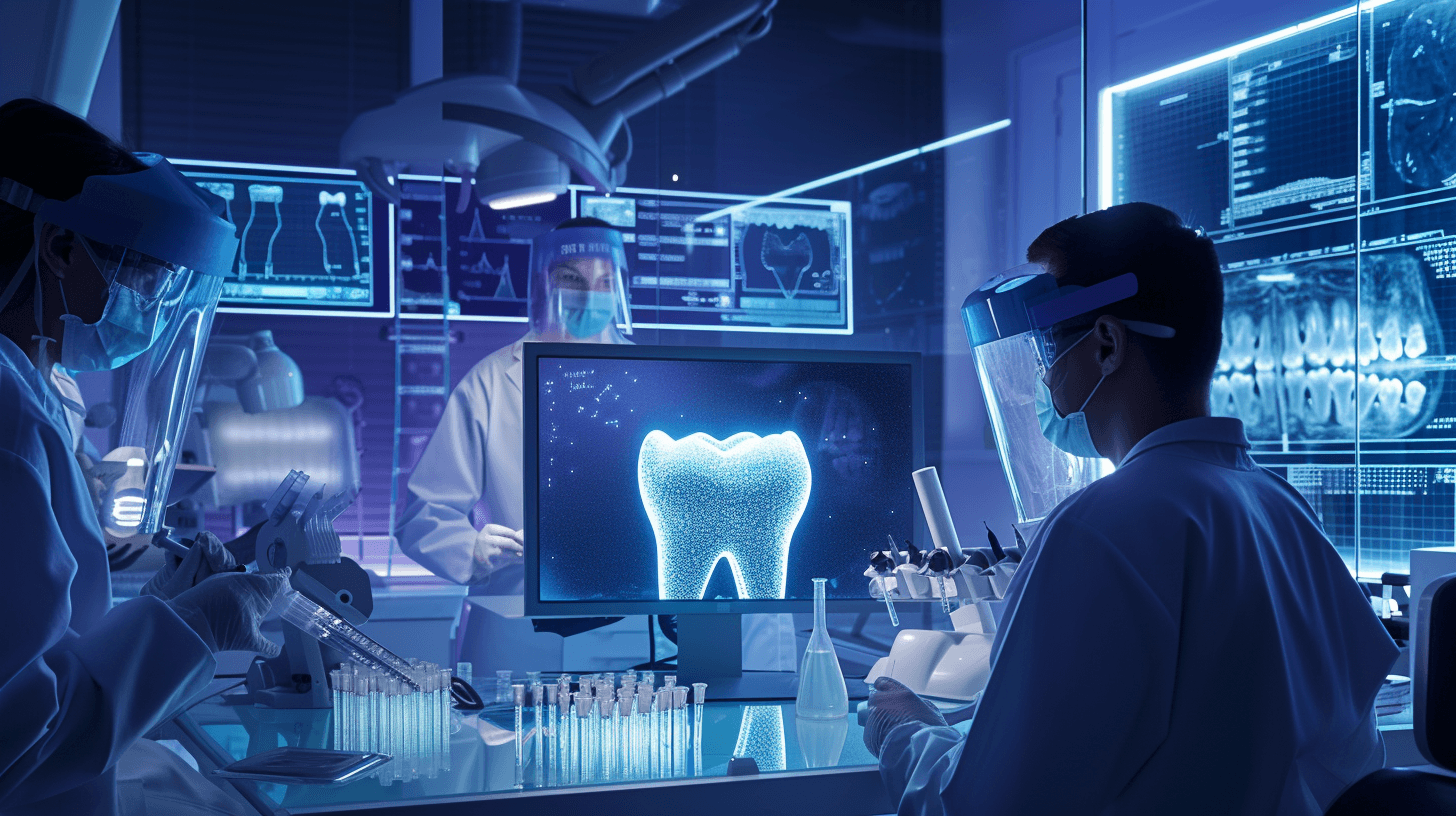The integration of nanotechnology into dental science, particularly through the utilization of nanoparticles for tooth enamel regeneration, represents a paradigm shift in the approach to oral healthcare. The unique attributes of nanoparticles, including their minuscule size and surface area, enable unparalleled penetration and interaction with the complex structures of tooth enamel. This not only facilitates a targeted therapeutic approach to the treatment of dental caries but also opens the door to innovative strategies for enamel repair.
By harnessing the potential of biomimetic nanoparticles, scientists aim to replicate the natural processes of enamel formation, offering a promise of restoration that was previously deemed unattainable with traditional dental practices. Furthermore, the functionalization of nanoparticles with antimicrobial agents introduces a novel means of combating the bacterial causes of tooth decay, potentially minimizing the need for invasive treatments.
The exploration of the full capabilities of nanoparticles in enamel regeneration invites a closer examination of how this technology could redefine standards of care in dentistry, signaling a significant leap forward in the pursuit of maintaining and enhancing oral health.
Key Takeaways
- Nanoparticles have emerged as a promising solution for tooth enamel regeneration.
- Biomimetic nanoparticles mimic the natural structure of tooth enamel and can deliver essential ions for enamel remineralization.
- Nanoparticles can be functionalized with antimicrobial agents to combat the bacteria that cause dental caries.
- The use of nanoparticles in dentistry offers the potential for non-invasive and painless treatments, potentially eliminating the need for invasive procedures like drilling and fillings.
The Promise of Nanoparticles
The advent of nanoparticles in dentistry heralds a transformative era, offering novel solutions to longstanding challenges in oral health care. Nanoparticles, due to their diminutive size, present a unique capacity for penetrating tooth enamel, thus enabling targeted therapy that could significantly enhance the treatment of dental caries and enamel regeneration. This innovative approach leverages the biomimetic potential of nanoparticles, which can be engineered to mimic the natural composition and structure of tooth enamel. By employing a synthetic extracellular matrix loaded with essential minerals like calcium and phosphate, nanoparticles facilitate the remineralization process, essentially repairing damaged enamel at a molecular level.
Further advancing the field of regenerative dentistry, nanoparticles are being explored for their role in tissue engineering, particularly in the regeneration of tooth enamel. This includes the potential for nanoparticles to act as carriers for stem cell therapy, targeting specific areas of dental decay and promoting the natural regeneration of tooth structure. The strategic use of nanoparticles in creating a conducive environment for stem cell differentiation and enamel tissue regeneration opens up new frontiers in oral health care, aiming to restore the integrity of tooth enamel with precision and efficiency.
Targeted Therapy Applications
Building upon the transformative potential of nanoparticles in dentistry, targeted therapy applications emerge as a pivotal advancement, leveraging these microscopic particles for precise dental treatments and oral health maintenance. These applications utilize nanoparticles as sophisticated delivery systems, designed to address specific challenges in restorative dentistry.
By honing in on the enamel matrix, nanoparticles facilitate the targeted delivery of essential ions such as calcium and phosphate, directly to the compromised enamel surface. This targeted approach not only ensures the efficient remineralization of tooth enamel but also minimizes potential side effects by concentrating treatment exactly where it is needed.
| Application in Dentistry | Role of Nanoparticles |
|---|---|
| Enamel Regeneration | Deliver calcium phosphate directly to the enamel surface |
| Anti-bacterial Treatments | Release antimicrobial agents to combat oral pathogens |
| Restorative Dentistry | Serve as fillers in dental composites for enhanced durability |
| Controlled Drug Delivery | Provide sustained release of therapeutic agents |
| Implant Coatings | Offer antimicrobial surface coatings to prevent infection |
This table showcases the versatility of nanoparticles in facilitating targeted therapy applications. By leveraging the unique properties of nanoparticles, dental professionals can offer more precise, effective, and minimally invasive treatments, heralding a new era in restorative dentistry and oral health maintenance.
Biomimetic Nanoparticles Explained
Harnessing the power of biomimetic nanoparticles represents a significant leap forward in restorative dentistry, offering innovative solutions for dental care challenges. These nanoparticles, engineered to mimic the structure and function of natural dental tissues, provide a foundation for pioneering treatments, particularly in the realm of tooth enamel regeneration and dental caries therapy. By closely replicating the mineral composition and organic components of tooth enamel, these particles facilitate the targeted delivery of essential ions and molecules directly into demineralized areas and dentinal tubules, promoting remineralization and repair.
The incorporation of HA (hydroxyapatite) crystals, a primary constituent of natural tooth enamel, into biomimetic nanoparticles, underscores their potential in not only addressing dental caries but also in advancing bone regeneration techniques. Such nanoparticles are adept at navigating the complex oral environment, ensuring that therapeutic agents are precisely deployed, optimizing the restoration of damaged enamel, and mitigating further decay. This biomimetic approach, characterized by its specificity and efficiency, heralds a new era in dentistry where the regeneration of tooth structures is achieved with unprecedented accuracy, heralding a paradigm shift towards minimally invasive and more effective dental treatments.
Antimicrobial Functionalization
Exploring beyond the structural mimicry provided by biomimetic nanoparticles, the antimicrobial functionalization of these particles presents an innovative strategy to combat oral pathogens effectively. This advancement marks a significant leap in dental care, particularly in the domain of dental implants, where the risk of infection poses a substantial challenge. The strategic incorporation of antimicrobial agents into the composition of the nanoparticles not only targets the microbial culprits responsible for dental diseases but also promotes a healthier oral environment conducive to the regeneration of tooth enamel.
| Feature | Benefit |
|---|---|
| Targeted Delivery | Ensures antimicrobial agents are delivered precisely to the affected area, minimizing the impact on beneficial oral microbiota. |
| Controlled Release | Tailors the release of antimicrobial agents to therapeutic needs, enhancing treatment efficacy. |
| Synthetic Sources | Offers versatility in the composition of the nanoparticles, allowing for a broad spectrum of antimicrobial functionalization. |
The essence of antimicrobial functionalization lies in its ability to offer a dual approach: not only does it pave the way for the regeneration of tooth enamel by combating decay-causing bacteria, but it also ensures the longevity and success of dental implants. This synthesis of synthetic sources and targeted therapeutic action epitomizes the innovative trajectory of nanotechnology in dentistry.
Controlled Release Systems
Controlled release systems in dentistry, particularly those utilizing nanoparticles, represent a significant advancement in targeted and efficient drug delivery for oral health care. These systems, ingeniously designed to release therapeutic agents gradually, ensure a sustained effect that is crucial for the treatment of various dental conditions. The application of controlled release systems extends notably to the repair and regeneration of the alveolar bone, a critical factor in the success of dental implants and periodontal disease management.
The implementation of nanoparticle-based controlled release systems in the arena of periodontal therapy and bone healing underscores the precision these technologies bring to dentistry. By enabling the localized release of drugs or growth factors, these systems significantly enhance the regeneration processes of periodontal tissues and alveolar bone. This targeted approach not only accelerates healing but also minimizes systemic side effects, presenting a superior alternative to conventional treatment methods.
Moreover, the integration of controlled release systems in the development of dental implants is transforming the prognosis of implantology. By facilitating the controlled release of osteoinductive agents directly at the implant site, these systems promote osseointegration and bone healing, thereby improving the longevity and success rates of dental implants. Through such innovations, controlled release systems are setting new standards in oral health care, offering promising avenues for enhanced therapeutic outcomes.
Non-Invasive Treatment Potential
Building on the advancements of nanoparticle-based controlled release systems in dentistry, the potential for non-invasive treatments opens new avenues for enhancing patient care and comfort. Nanoparticles, with their large surface area, enable a targeted approach to dental health that is minimally invasive yet highly effective. This innovative strategy in the field of dentistry marks a significant departure from traditional, more invasive methods, offering a more patient-friendly alternative.
The application of nanoparticles for non-invasive treatments in the dental field is underscored by several key benefits:
- Targeted delivery of therapeutic agents directly to the affected area, minimizing side effects and improving treatment outcomes.
- Controlled release mechanisms ensure a sustained release of therapeutic agents, enhancing the efficacy of treatments.
- Minimization of invasive procedures, potentially reducing patient anxiety and discomfort associated with traditional dental treatments.
This shift towards non-invasive methodologies not only represents a leap forward in patient care but also underscores the transformative potential of nanotechnology in revolutionizing dental practices. Through the integration of nanoparticles, the dental field is poised to offer more effective, efficient, and comfortable treatment options, aligning with the broader goal of improving oral health outcomes while enhancing patient experience.
Future Research Directions
As nanotechnology continues to evolve within the field of dentistry, future research will be pivotal in unlocking new methodologies for targeted drug delivery, tissue engineering, and regenerative dentistry. The advancement in nanoparticle synthesis, characterization, and application promises to revolutionize dental treatments through precision medicine, offering solutions tailored to individual patient needs. Integration of nanotechnology with cutting-edge technologies like 3D printing and artificial intelligence could lead to innovative treatment modalities, enhancing the efficacy and efficiency of dental care.
Collaboration across disciplines is crucial in translating nanotechnology from bench to bedside. Scientists, dentists, and manufacturers must work in concert to navigate the complex regulatory landscape, ensuring that nanoparticle-based therapies are safe, effective, and accessible. Addressing challenges such as potential toxicity, cost-effectiveness, and control over drug release will be essential in realizing the full potential of nanotechnology in dentistry.
Ongoing research efforts are directed toward optimizing the use of nanoparticles, to improve the properties of dental materials, implants, and treatments. By enhancing performance and longevity, nanotechnology holds the promise of significantly advancing dental health outcomes, ultimately contributing to the well-being and quality of life of patients worldwide.
Can Nanoparticles be Used in Home Teeth Whitening Products?
Yes, nanoparticles can be used in the best home teeth whitening products. These tiny particles can penetrate enamel to remove deep stains. Their small size allows for better coverage and more effective whitening. Look for home whitening products that contain nanoparticles for optimal results.
Frequently Asked Questions
Does Nano-Hydroxyapatite Work?
Navigating through the molecular intricacies of dentistry, the question of nano-hydroxyapatite’s efficacy emerges like a beacon in the quest for oral health advancements. Analytically speaking, nano-hydroxyapatite has demonstrated significant promise in the realm of dental care. Its biomimetic nature, mirroring the structural essence of natural tooth enamel, facilitates enhanced remineralization. By delivering essential ions directly to compromised enamel, it heralds a new dawn in non-invasive, targeted dental therapies, marking a pivotal shift towards superior oral health outcomes.
What Are the Advantages of Nanoparticles in Dentistry?
Nanoparticles in dentistry offer significant advantages, including enhanced aesthetics, superior wear resistance, and improved biocompatibility. Their small size facilitates targeted drug delivery and promotes tissue engineering and regenerative dentistry, enhancing the performance and longevity of dental implants and materials. Furthermore, nanoparticles possess antimicrobial properties that are crucial for preventing and treating oral diseases. Additionally, their nanoporous structures enable controlled drug release, optimizing therapeutic outcomes in dental treatments.
Can Nano-Hydroxyapatite Reverse Cavities?
Nano-hydroxyapatite has garnered attention for its potential to reverse cavities, leveraging its ability to mimic the natural composition of tooth enamel. This synthetic material can promote remineralization by directly supplying the enamel with essential minerals, such as calcium and phosphate ions. Its application in dental caries treatment represents a significant advancement, offering a non-invasive, biomimetic solution that could fundamentally alter the approach to managing and preventing tooth decay and cavities.
How Do You Enhance Enamel Remineralization?
Enhancing enamel remineralization is imperative for dental health, addressing a prevalent issue where over 2.3 billion people face caries in permanent teeth. An analytical exploration into this domain reveals that incorporating advanced materials, such as biomimetic hydroxyapatite, presents a significant stride towards replicating the natural remineralization process. This approach not only promises to restore tooth enamel but also introduces a paradigm shift in preventive dental care, emphasizing the need for innovative, non-invasive treatments.
Conclusion
In an era where the diminutive scale of nanoparticles belies their monumental potential, the irony lies in the transformative power these microscopic entities wield in the realm of dental care. As the architects of tooth enamel regeneration, their capacity to mimic nature while offering a bastion against microbial adversaries encapsulates a paradox of scale versus impact. This microscopic frontier, once deemed the realm of the unseen, now stands as the beacon of innovation in dentistry, promising a future where tooth decay is but a relic of the past.




